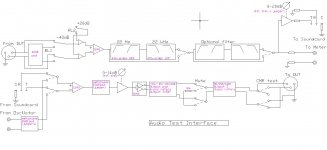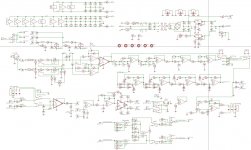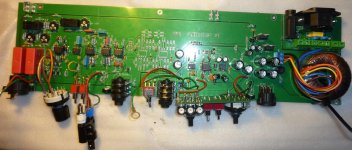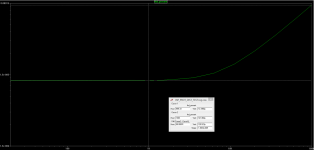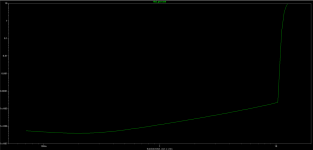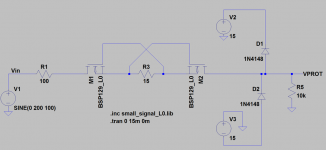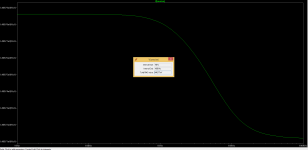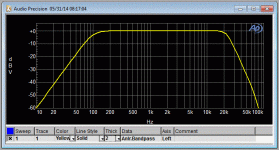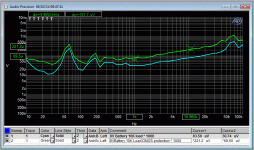In my opinion, the sound card upgrade arena is almost completely a scam. I have had it work once with a fortunate motherboard powered by a fortunate power supply--really just the luck of the draw, and one of my friends had it work just once with a differential output sound card. Otherwise, the prospect of powering any sound card, regardless of price, on the excrebly dirty computer power is an idea that is bankrupt from the start.
Can you run a sports car with used road tar as the fuel?
Really not!
However, I find out that bluetooth, even at extremely low price points works admirably better.
Personally, my latest experiment is a 5v "Tracking Pre-Regulator" with a tag team pair of fine MC regs from onsemi fed by an ordinary 12v reg.
A really clean 5v could be useful for bluetooth although really, even the cheapest 5v solution from the nearest gas/petrol station could possibly outperform a PC supply (because the number of things running on said supply is dramatically different and probably a lot less noises).
The bluetooth audio receivers are all op-amp based, and that means, like any size op-amp in existence, that linearity falls to extremely bad and that you'll get either adequate tone or adequate imaging in such conditions, but not both.
Of course a buffer could be useful to alleviate the linearity problem, and there's no crime in using a tube for this.
Also, modern small signal devices, could use a bit of gain, 4x~6x or so.
Anyway, I do consider small signal tubes as valid for high fidelity music replay; however, anything powered by the same supply running a PC, is probably not.
Sorry for that news, but I hope it saves you some cash--it may be well spent with the small signal triodes, however, I've already tried all of the sound cards and can report those are easily beaten by a bluetooth (on a private power supply, not the PC's power supply) at far lower cost than scammy "upgrade" sound cards.
Even a really minimal effort can bet the most expensive of sound cards, and indeed I really have tried this.
It was a surprise and it was frustrating, but of course, far higher fidelity at such a minimal expense is really enjoyable.
The year is 2014 and indeed, upgrade sound card is yesterday's news, best forgotten. Just don't do it. Anything run on its own private power supply is highly likely to work a lot better, cost less, and not even require as much effort.
Please get the music out of the computer, digitally, WITHOUT using the PC power supply for the analog replay. Your signal does run through the entirety of a power supply the moment before you hear it. Now, that is something to remember.
The tubes are indeed worthwhile--just don't thoroughly trash the signal before running it through the tubes. Cheers!
Can you run a sports car with used road tar as the fuel?
Really not!
However, I find out that bluetooth, even at extremely low price points works admirably better.
Personally, my latest experiment is a 5v "Tracking Pre-Regulator" with a tag team pair of fine MC regs from onsemi fed by an ordinary 12v reg.
A really clean 5v could be useful for bluetooth although really, even the cheapest 5v solution from the nearest gas/petrol station could possibly outperform a PC supply (because the number of things running on said supply is dramatically different and probably a lot less noises).
The bluetooth audio receivers are all op-amp based, and that means, like any size op-amp in existence, that linearity falls to extremely bad and that you'll get either adequate tone or adequate imaging in such conditions, but not both.
Of course a buffer could be useful to alleviate the linearity problem, and there's no crime in using a tube for this.
Also, modern small signal devices, could use a bit of gain, 4x~6x or so.
Anyway, I do consider small signal tubes as valid for high fidelity music replay; however, anything powered by the same supply running a PC, is probably not.
Sorry for that news, but I hope it saves you some cash--it may be well spent with the small signal triodes, however, I've already tried all of the sound cards and can report those are easily beaten by a bluetooth (on a private power supply, not the PC's power supply) at far lower cost than scammy "upgrade" sound cards.
Even a really minimal effort can bet the most expensive of sound cards, and indeed I really have tried this.
It was a surprise and it was frustrating, but of course, far higher fidelity at such a minimal expense is really enjoyable.
The year is 2014 and indeed, upgrade sound card is yesterday's news, best forgotten. Just don't do it. Anything run on its own private power supply is highly likely to work a lot better, cost less, and not even require as much effort.
Please get the music out of the computer, digitally, WITHOUT using the PC power supply for the analog replay. Your signal does run through the entirety of a power supply the moment before you hear it. Now, that is something to remember.
The tubes are indeed worthwhile--just don't thoroughly trash the signal before running it through the tubes. Cheers!
That's a lovely rant, but what does it have to do with the subject at hand? Or did you even read the subject of this thread?
That's a lovely rant, but what does it have to do with the subject at hand? Or did you even read the subject of this thread?

Common problem we all succumb to at times.
That's a lovely rant, but what does it have to do with the subject at hand? Or did you even read the subject of this thread?
Yes, I read this and the previous. But I am puzzled about the very low distortion figures of sound cards and that they're considered good for measuring but not so good for music replay.
So, I suppose that the inherent question is, if the interface box is somehow isolated away from the computer power supply and also not using any analog signal that is powered by the computer supply?
But I am puzzled about the very low distortion figures of sound cards and that they're considered good for measuring but not so good for music replay.
In hobby audio, people say all kinds of strange things.
Pete's box shows lower noise when powered separately, and that's one of the improvements we've been discussing.
I found this project to interface with good specifications.
Suddenly one can avail any idea.
Audio test interface
Unless you are signed up that forum, then there is nothing to see.
Attachments
Oh, that's really good!Pete's box shows lower noise when powered separately, and that's one of the improvements we've been discussing.
(Same improvement also fixes computer sound.) 😀
There are certainly times when you want complex filters - like if you're measuring a class-D amp. But the thought of adding a half dozen more opamps to the signal path is unappealing, at least to me. It will add significant noise, and a little distortion...
I suppose one could include some filters with a switch to physically bypass them. On the HP 8903 I find I use the 400Hz high-pass, and the 30kHz low-pass, fairly often. I'm thinking that a 2-pole filter would be enough.
Yes, No, Maybe?
Pete
I suppose one could include some filters with a switch to physically bypass them. On the HP 8903 I find I use the 400Hz high-pass, and the 30kHz low-pass, fairly often. I'm thinking that a 2-pole filter would be enough.
Yes, No, Maybe?
Pete
There are certainly times when you want complex filters - like if you're measuring a class-D amp. But the thought of adding a half dozen more opamps to the signal path is unappealing, at least to me. It will add significant noise, and a little distortion...
I suppose one could include some filters with a switch to physically bypass them. On the HP 8903 I find I use the 400Hz high-pass, and the 30kHz low-pass, fairly often. I'm thinking that a 2-pole filter would be enough.
Yes, No, Maybe?
Pete
Pete, one option would be an external loop provision. I know some people use stand-alone external filters from the likes of Krohn-Hite (I do) and that leaves max flexibility.
You know, like the external processor loop on a vintage HiFi.
jan
How about a pair of back to back depletion mode mosfets for input protection?
too noisy -- at least the last time i tried it with LND150s
I suppose one could include some filters with a switch to physically bypass them. On the HP 8903 I find I use the 400Hz high-pass, and the 30kHz low-pass, fairly often. I'm thinking that a 2-pole filter would be enough.
Yes, No, Maybe?
The filters on the 8903 are a lot steeper than 2nd order as I recall. I suggest looking at the response curves in the manual and designing something similar.
I use the 400 Hz HP quite a bit to figure out hum issues. The 30 kHz can be handy to limit the noise bandwidth. For reference, the AP SYS-2700 offers 22 kHz, 30 kHz, 80 kHz, and >500 kHz measurement bandwidths. I find it pretty reasonable to use the 22 kHz when I look at THD+N at 1 kHz.
The main value-adds of your interface, as I see it, are: input ranging, filters, and protection circuits. If you don't support differential in/out already, I suggest doing so.
~Tom
This is what I get when i simulate for noise. Its pretty much the resistor at the input that sets the noise level.
Unless you have fet models that incorporate the relevant noise sources (rarely the case) you can pretty much discount the simulation from a noise perspective.
I think any noise source inherent to the mosfet gets shunted by rsdon in this application , it being a depletion mode device operating in the ohmic region, no?
too noisy -- at least the last time i tried it with LND150s
I have tried this out and its at least 6-8 db better/lower on the noise floor on my setup using Pete's box than the solution Pete used previously i.e, the two large resistors, the overall THD+N value also improved by about 5db.
- Status
- Not open for further replies.
- Home
- Design & Build
- Equipment & Tools
- Improved Sound Card Interface - Ideas and Suggestions?
